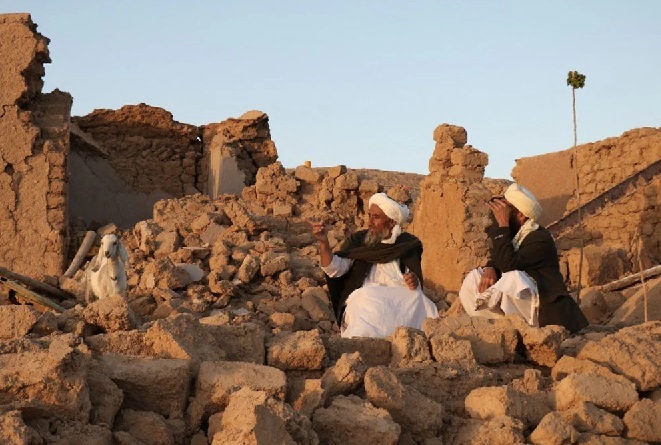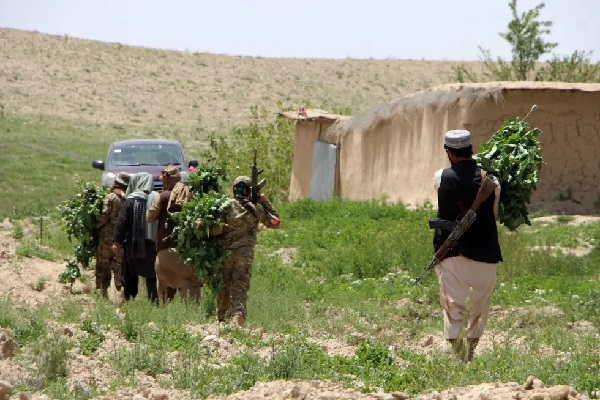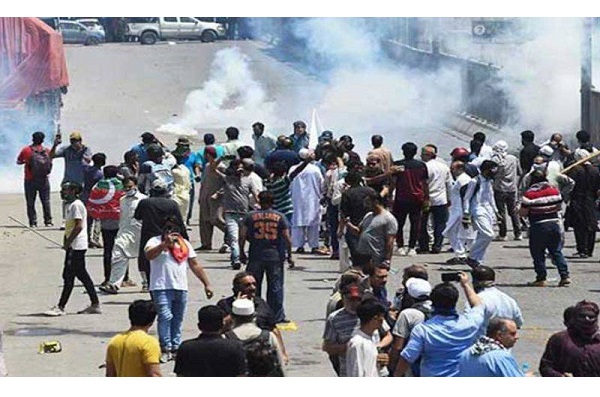ISLAMABAD: The Afghan interim government announced the formation of a committee on Sunday to probe violent clashes that left two
KABUL: A magnitude 6.3 earthquake struck western Afghanistan on Wednesday, hitting an area where more than 2,000 people were killed after a series of similar tremors on the weekend.
The quake occurred at a shallow depth at around 5:10am local time (12:40am GMT), with its epicentre about 29 kilometres north of the city of Herat, the United States Geological Survey said.
Volunteers and rescuers have been working since Saturday in what are now last-ditch attempts to find survivors from the earlier series of earthquakes, which levelled entire villages and affected more than 12,000 people, according to UN estimates.
Local and national officials have given conflicting counts of the number of dead and injured from the previous earthquakes, but the disaster ministry has said 2,053 people died.
“We can’t give exact numbers for dead and wounded as it is in flux,” said disaster management ministry spokesman Mullah Janan Sayeq.
There were no immediate reports of new casualties after Wednesday’s quake, which hit near Herat city, home to more than half a million people.
There were no early details on casualties caused by the latest quake, disaster management spokesman Janan Sayeeq told Reuters.
The office of Herat’s governor said in a statement that some districts adjoining areas that had been completely flattened by earlier quakes had suffered “huge losses”.
“Mobile medical teams and officials have been working together and have transferred several injured people to hospital,” the governor’s office said.
The earlier earthquakes completely destroyed at least 11 villages in Herat province’s Zenda Jan district, according to the UN.
“Not a single house is left, not even a room where we could stay at night,” said 40-year-old Mohammad Naeem, who told AFP he lost 12 relatives, including his mother, after Saturday’s earthquakes.
“We can’t live here anymore. You can see, our family got martyred here. How could we live here?”
Local media reported that many Herat residents had been spending their nights living in tents in the open air due to a fear of aftershocks following the weekend tremors.
Providing shelter on a large scale will be a challenge for Afghanistan’s Taliban authorities, who seized power in August 2021, and have fractious relations with international aid organisations.
Afghanistan is frequently hit by deadly earthquakes, but the weekend disaster was the worst to strike the war-ravaged country in more than 25 years.
Most homes in rural Afghanistan are made of mud and built around wooden support poles, with little in the way of steel or concrete reinforcement.
Multi-generational extended families generally live under the same roof, meaning serious earthquakes can devastate communities.
You May Also Like
ISLAMABAD: The Pakistan Tehreek-i-Insaf (PTI) has finalised its plan to observe the anniversary of May 9 mayhem by holding rallies across
PESHAWAR: Khyber Pakhtunkhwa Chief Minister Ali Amin Gandapur on Sunday discounted the oath-taking ceremony of the new






